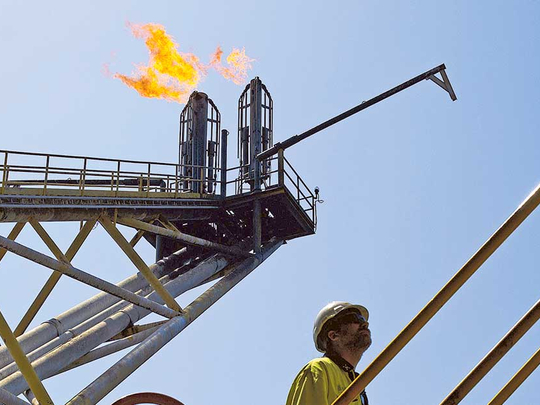
New York: Oil headed for the biggest quarterly advance in seven years as falling US supply added to speculation the global oversupply is easing.
Futures have risen 29 per cent this quarter in New York, the biggest gain since June 2009. US crude stockpiles dropped to the lowest since March and output fell a third week, the Energy Information Administration said Wednesday. Oil has been whipsawed after the U.K.’s vote to leave the European Union and slipped Thursday as Goldman Sachs Group Inc. said a recovery in Nigerian supply is a risk to its $50 a barrel forecast for the second half of the year.
Supply disruptions and falling US output have helped cut a global surplus, sparking a rally of more than 85 per cent since prices hit a 12-year low in February. Both the International Energy Agency and the Organisation of Petroleum Exporting Countries forecast this month that the market is heading toward balance as demand growth outpaces supply.
“The global crude market has been rebalancing with slowing production and rising demand in the second quarter,” Hong Sung Ki, a Seoul-based commodities analyst at Samsung Futures Inc., said by phone. “Crude demand forecasts will have to be adjusted following Brexit and this increases volatility in the market as it tries to rebalance itself.”
West Texas Intermediate fell as much as 61 cents, or 1.2 per cent, to $49.27 a barrel on the New York Mercantile Exchange and traded at $49.41 at 1:14pm. Seoul time. Prices climbed $2.03 to settle at $49.88 on Wednesday, the highest since June 23. Total volume traded was 41 per cent below the 100-day average.
Sliding Supply
Brent for August settlement, which expires on Thursday, lost as much as 65 cents, or 1.3 per cent, to $49.96 a barrel on the London-based ICE Futures Europe exchange. Prices are up 26 per cent this quarter. The more-active September contract fell 59 cents to $50.73 a barrel. The global benchmark crude traded at a 59-cent premium to WTI for August.
US crude inventories dropped to 526.6 million barrels, the lowest since the week ended March 11, EIA data show. Supplies climbed to an 87-year high of 543.4 million barrels in the last week of April. Production slipped by 55,000 barrels a day to 8.62 million last week, the lowest since September 2014, the EIA said.
If a ceasefire agreement between militants and the government is sustainable in Nigeria, it could lead to higher output, with the government “optimistically” predicting a return to normal levels by the end of July, Goldman Sachs analysts including Damien Courvalin wrote in a note dated June 29. The return of supplies poses a risk to the bank’s price outlook as it would bring the global oil market close to balance over the final six months of the year, according to the bank.












